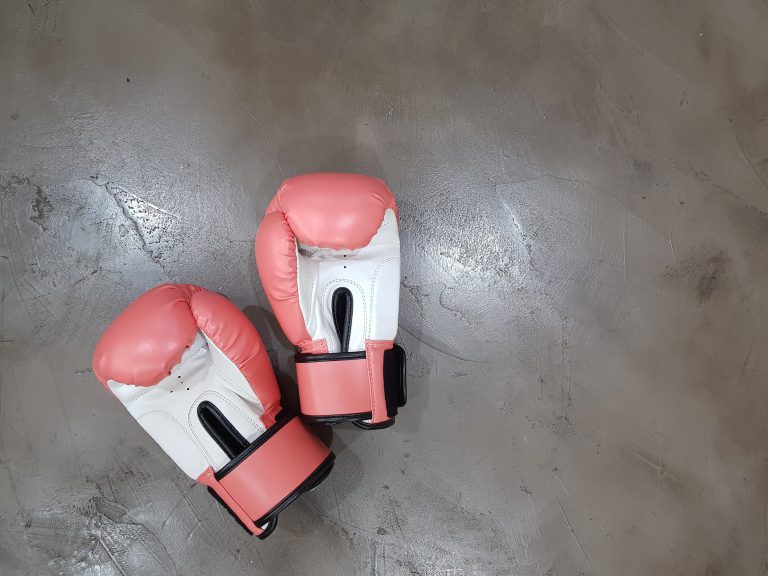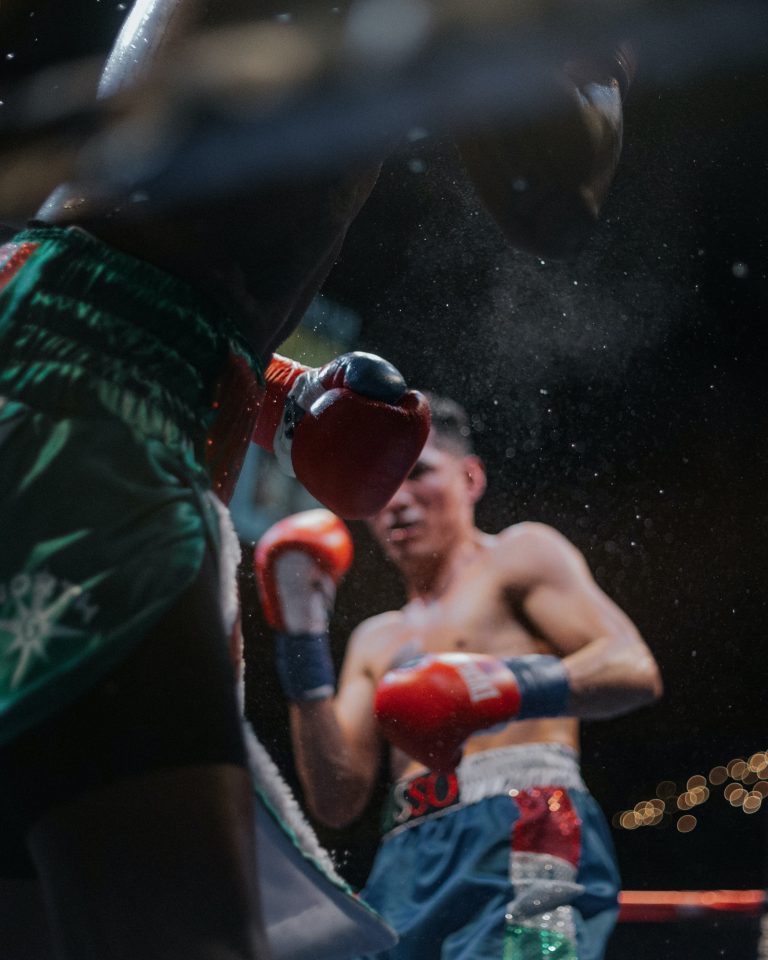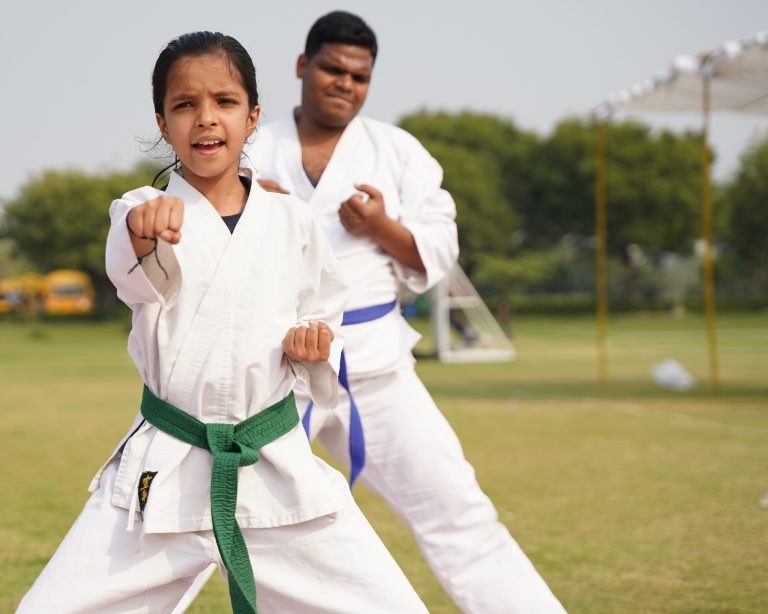Taekwondo vs Karate Kicks: Which is the Best?
When it comes to martial arts, Taekwondo and Karate are two of the most popular styles. Both have a long and rich history, and both have their own unique set of techniques and moves. But when it comes to kicks, which is the better style? Let’s take a closer look.
The Kicks of Taekwondo
Taekwondo is a Korean martial art that places a lot of emphasis on kicking techniques. In fact, Taekwondo is known for having some of the most powerful and dynamic kicks of any martial art.
One of the signature kicks of Taekwondo is the roundhouse kick. This kick involves swinging the leg in a circular motion and hitting the target with the top of the foot. The roundhouse kick can be performed at various heights, including the head and body.
Another common kick in Taekwondo is the front kick. This kick involves lifting the knee and extending the leg to hit the target with the ball of the foot. The front kick is often used to attack the opponent’s midsection.
Other kicks used in Taekwondo include the side kick, back kick, and jumping kick. All of these kicks are designed for speed and power, and can be devastating when executed correctly.
The Kicks of Karate
Karate is a Japanese martial art that also incorporates kicking techniques, but to a lesser extent than Taekwondo.
One of the signature kicks in Karate is the front snap kick. This kick involves snapping the leg forward and hitting the target with the ball of the foot. The front snap kick is often used to strike the opponent’s face or chest.
Another common kick in Karate is the sidekick. This kick involves striking the target with the edge of the foot. The sidekick is often used to attack the opponent’s midsection.
Like Taekwondo, Karate also uses the roundhouse kick. However, the Karate version of the roundhouse kick typically involves hitting the target with the instep or the ball of the foot.
Which is Better?
So, which is the better style when it comes to kicks? The answer is not as clear-cut as you might think.
Taekwondo is certainly known for its powerful and dynamic kicks, and many people believe that Taekwondo kicks are some of the best in the world. However, Taekwondo kicks are often higher and more acrobatic than Karate kicks, which means they require a lot of practice to master.
Karate, on the other hand, places less emphasis on kicking techniques, but that doesn’t mean that Karate kicks are not effective. In fact, many Karate practitioners argue that the kicks in Karate are more practical and efficient than those in Taekwondo.
Ultimately, the effectiveness of any kick depends on various factors such as timing, distance, accuracy, and power. It’s also important to consider factors such as the practitioner’s skill level, physical condition, and the situation in which the technique is being used.
The Bottom Line
In conclusion, Taekwondo and Karate both have their own unique set of kicks, each with its own strengths and weaknesses. Whether one style is better than the other depends on the situation and the practitioner’s individual skill level and preference.
Regardless of which style you choose, the most important thing is to practice consistently and master the techniques. With the right training and dedication, anyone can develop powerful and effective kicks that can be used in self-defense or competition.
Taekwondo vs Karate Kicks: Most Frequently Asked Questions
Martial arts have been around for centuries, and two of the most popular disciplines are taekwondo and karate. These two martial arts styles share some similarities, but they also have many differences, particularly in their kicking techniques. In this blog post, we will answer some of the most frequently asked questions about taekwondo vs karate kicks.
1. What is Taekwondo?
Taekwondo is a Korean martial art that focuses primarily on kicking techniques. It is known for its flashy and acrobatic kicks, often performed at great heights and speeds. Taekwondo also involves hand strikes, blocks, and throws, but its primary emphasis is on kicks.
2. What is Karate?
Karate, on the other hand, is a Japanese martial art that has a greater emphasis on hand strikes and blocks, with kicks being a secondary aspect. Karate kicks tend to be more linear and direct compared to taekwondo kicks. Karate is also known for its powerful strikes and emphasis on finishing a fight quickly.
3. What are the key differences between Taekwondo and Karate kicks?
The key differences between taekwondo and karate kicks are their techniques, angles, and target areas. Taekwondo kicks are more diverse and acrobatic compared to karate kicks, which focus on hip and leg rotation for power. Taekwondo kicks are also delivered at higher angles and have a greater emphasis on hitting targets above the waist, while karate kicks are delivered at lower angles and typically focus on hitting targets below the waist.
4. Which martial art has more effective kicks, Taekwondo, or Karate?
The effectiveness of any martial art technique depends on the situation in which it’s used. Both taekwondo and karate kicks can be effective in their own right, depending on the context. Taekwondo kicks are great for creating distance and keeping your opponent at bay, while karate kicks are ideal for delivering devastating power and finishing a fight quickly.
5. Is it possible to use Taekwondo and Karate kicks together?
Yes, it is possible to use both taekwondo and karate kicks together in a martial arts application such as MMA, where mixing martial arts is expected. Combining the techniques of both martial arts can create a dynamic and versatile fighting style that offers both range and power.
6. Which martial art is better for self-defense, Taekwondo or Karate
Neither taekwondo nor karate is inherently better for self-defense because effectiveness depends on many factors, including the individual fighter’s skill level, physical fitness, and the specific situation. However, a well-trained individual in either martial art can effectively defend themselves in many situations.
7. Which martial art is better for competition, Taekwondo or Karate?
Both taekwondo and karate have their own distinct competition systems. In taekwondo, competitions revolve around high kicks and acrobatics, while karate competitions place greater emphasis on power and technique. Both martial arts have active and successful competition circuits worldwide.
Beginner’s Guide: Taekwondo vs Karate Kicks
If you’re new to martial arts, you may find it difficult to identify the differences between Taekwondo and Karate, especially when it comes to their kicking techniques. Both martial arts have their unique styles and techniques. In this blog post, we’ll take an in-depth look at Taekwondo and Karate kicks, their similarities, and differences. By the end of this post, you’ll have a better understanding of each martial art’s kicking techniques.
Taekwondo kicks
Taekwondo is a Korean martial art that emphasizes kicks, especially the high kick. The kicks in Taekwondo are powerful, fast, and dynamic. Here are some of the most common Taekwondo kicks:
1. Front Kick (Apchagi)
The front kick is one of the most basic Taekwondo kicks. It involves attacking the opponent with the front of the foot. To perform this kick, follow these steps:
– Stand in the fighting stance with your feet shoulder-width apart.
– Take a small step forward with your lead foot.
– Lift your knee to waist level and extend your foot forward, striking the target with the ball of your foot.
– Recoil your foot back to the starting position.
2. Roundhouse Kick (Dollyo Chagi)
The Roundhouse kick is one of the most powerful Taekwondo kicks. It involves a circular motion of the leg to strike an opponent with the instep of the foot or the shin. To perform this kick, follow these steps:
– Stand in the fighting stance with your feet shoulder-width apart.
– Pivot your lead foot, turning your hips to the side.
– Chamber your kicking leg by lifting your knee high.
– Extend your leg forward in a circular motion, striking the target with either the instep of the foot or the shin.
– Recoil your leg back to the starting position.
3. Side Kick (Yeop Chagi)
The sidekick involves striking an opponent with the side of the foot, and it’s an excellent kick for self-defense. To perform this kick, follow these steps:
– Stand in the fighting stance with your feet shoulder-width apart.
– Pivot your lead foot, turning your hips to the side.
– Chamber your kicking leg by lifting your knee high, keeping your toes pointing down.
– Extend your leg sideways, striking the target with the edge of the foot.
– Recoil your leg back to the starting position.
Karate kicks
Karate is a Japanese martial art that incorporates both hand and foot strikes. The kicks in Karate are powerful and low to the ground. Here are some of the most common Karate kicks:
1. Front Snap Kick (Mae Geri)
The front snap kick involves striking an opponent with the ball of the foot. It’s a fast and powerful kick that’s excellent for close range combat. To perform this kick, follow these steps:
– Stand in the fighting stance with your feet hip-width apart.
– Lift your knee high in front of you.
– Extend your foot forward, striking the target with the ball of your foot.
– Quickly recoil your leg back to the starting position.
2. Side Kick (Yoko Geri)
The side kick is a powerful kick that involves striking an opponent with the heel of the foot. It’s usually used to attack an opponent’s ribcage. To perform this kick, follow these steps:
– Stand in the fighting stance with your feet shoulder-width apart.
– Pivot your lead foot, turning your hips to the side.
– Chamber your kicking leg by lifting your knee high.
– Extend your leg sideways, striking the target with the heel of your foot.
– Recoil your leg back to the starting position.
3. Roundhouse Kick (Mawashi Geri)
The roundhouse kick is a powerful kick that involves striking an opponent with the instep of the foot. It’s usually used to attack an opponent’s midsection or head. To perform this kick, follow these steps:
– Stand in the fighting stance with your feet shoulder-width apart.
– Pivot your lead foot, turning your hips to the side.
– Chamber your kicking leg by lifting your knee high.
– Extend your leg in a circular motion, striking the target with the instep of your foot.
– Recoil your leg back to the starting position.
The Differences Between Taekwondo and Karate Kicks
While both styles emphasize kicking techniques, there are some differences between Taekwondo and Karate kicks. Here are some differences to keep in mind:
– Taekwondo kicks are focused on speed and power, while Karate kicks are geared towards low to the ground, devastating blows.
– Taekwondo kicks use more dynamic, jumping, and spinning kicks, while Karate kicks are more grounded.
– Taekwondo kicks are delivered with the ball of the foot or the instep, while Karate kicks are delivered with the heel or the ball of the foot.
Conclusion
In this beginner’s guide, we covered some of the most common Taekwondo and Karate kicks. We hope this post has helped you better understand the differences between Taekwondo and Karate kicks. While both martial arts have their unique styles and techniques, it’s up to you to decide which one suits you best. Finally, always remember that the key to mastering any martial art, including Taekwondo and Karate, is consistent and disciplined practice.
Inhaltsverzeichnis






